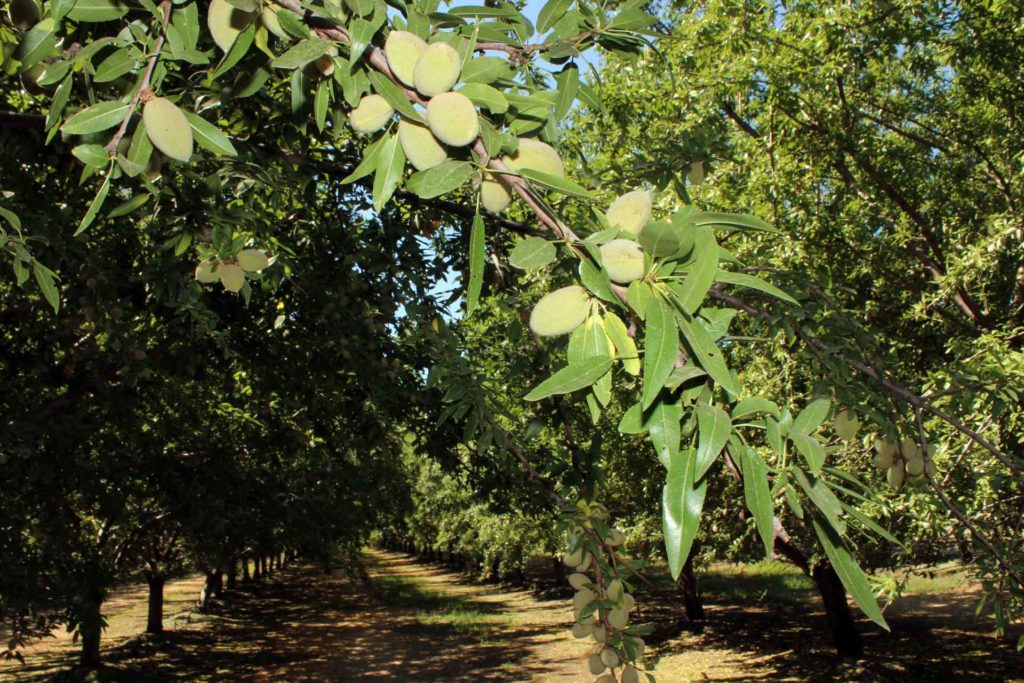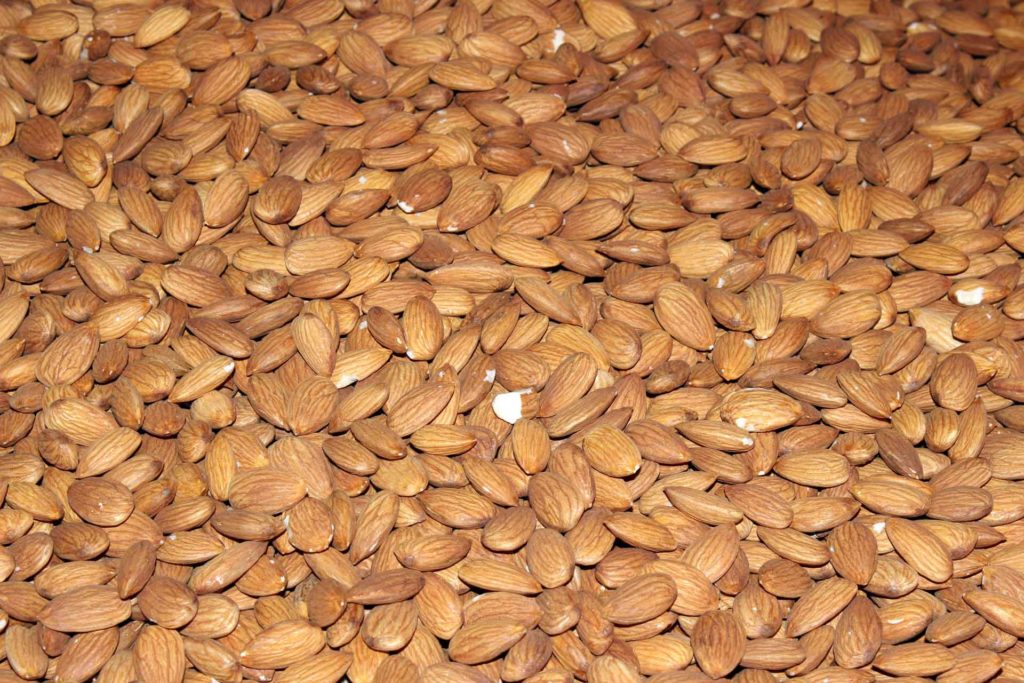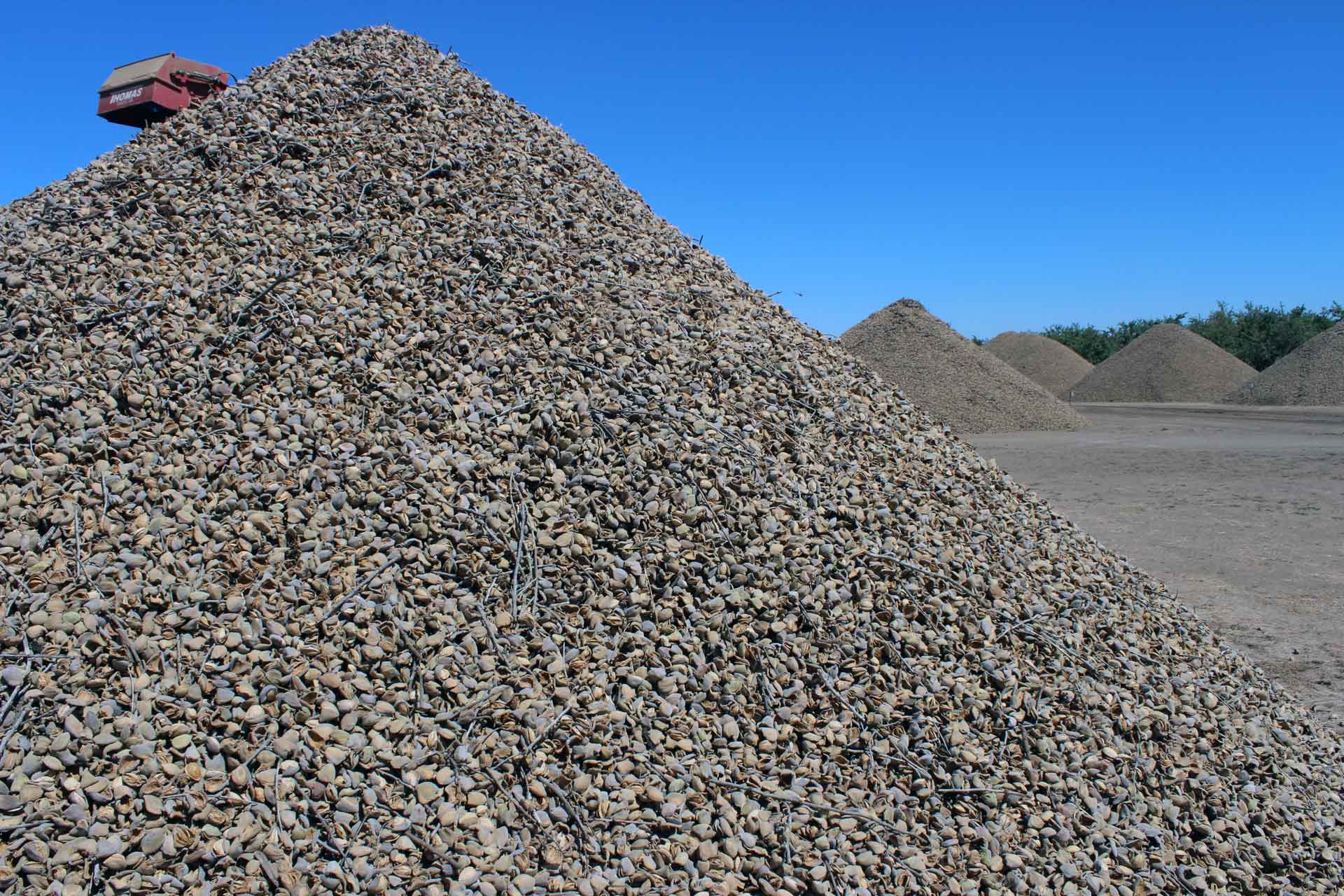The United States Department of Agriculture (USDA)/National Agricultural Statistics Service (NASS) releases two almond reports every year. The first is the subject report based on opinions from randomly selected California almond growers throughout the state by a phone survey conducted in April and May.
NASS’s objective report provides a more precise estimate on yield based on actual almond counts and measurements gathered from over 850 orchards statewide that includes the weight, size and grade of the average almond sample broken down by growing district and variety.
The 2019 subjective report was released in May, and for the second year in a row it is predicting a record breaking almond crop. According to the NASS, California almond orchards are expected to produce 2.50 billion pounds of nuts this year, an increase of 8.69 percent over the 2018 2.30 billion-pound crop.
NASS’s objective report will be released on July 3, 2019.
2019 Crop
Richard Waycott, president and CEO of the Almond Board of California (ABC), said, “We’re seeing sort of a mixed report.”
“I’d say if you look at the numbers, the northern crop, the northern Sacramento Valley in particular, is certainly lighter than the southern part of the state,” Waycott said.
“But the southern part is looking very strong, and that’s where the majority of the crop is produced. So in our largest growing area the crop looks to be a very good one for this year,” Waycott said.
Considering last year’s wet, windy and cold weather, the forecast for a larger crop could be surprising to some in the industry.
“Mother Nature can be tricky,” Waycott said. “We have seen this before where we’ve had a wet winter, and a lot of wind, and cooler temperatures, and yet we can set a really good crop even with those conditions.”
There’s always a little bit of doom and gloom with these kinds of winter’s even though the water is desperately needed, Waycott said.
The Sacramento Valley was hit the hardest with the weather.
“They just got so hammered by wind and rain up there so consistently that I think the impact on pollination was evident,” Waycott said.
Waycott said, he thinks a lot of it boils down to if there’s enough time for the bees to do their work. And the southern part of the state appears to have had enough breaks in the weather for the bees to work, Waycott said.

Almond Acreage
A contributing factor to the larger 2019 almond crop is the increase in almond acreage. NASS reports that almond acreage in California increased in 2018. Bearing acres were reported at 1.09 million acres, up six percent from 2017. Total almond acres including nonbearing acreage in 2018 is estimated at 1.39 million acres, up two percent from the previous year.
Currently, there are approximately 300,000 nonbearing acres of almonds in the ground.
“That number has been pretty consistent over recent years, and as a result of that, we have quite a pipeline of acreage that’s coming online in terms of bearing (acreage). We don’t see any real slowdown at the moment anyway,” Waycott said.
A significant increase in bearing acreage has been seen as well. “We’re forecasting to be up at about 1.17 million acres with the crop that’s coming on right now,” Waycott said.
The increase in acreage has been studied thoroughly, Waycott said, and a lot of the new acreage is going into other cropland that growers have converted from annual to permanent crops.
“We also have the dairy industry that’s been quite a source of new acreage as well,” Waycott said.
Many dairy producers have decided to bring cattle feed in from other states and plant permanent crops like almonds or pistachios instead, Waycott said.
“In theory there’s still acreage that could be converted into almonds or some other permanent crop,” Waycott said.
Acreage is increasing across all almond growing regions, Waycott said.
The more unusual trend has been acreage increases in the Sacramento Valley. Almonds have always been grown there, but lower yields have kept growth at a slower pace than the San Joaquin and Central valleys, Waycott said.
The majority of the growth has taken place in the southern part of the state because of the higher yields that are produced there.
“It’s just easier to manage the crop because of less wind, and less rain, and all those things,” Waycott said.
“But what has happened to a limited extent is that some growers have either switched to almonds, or new growers have come in and expanded almond acreages in the Sacramento Valley just due to the prospect of having better water availability,” Waycott said.
Long Term Growth
For long term growth water is crucial to increasing acreage.
“Water is obviously the major bugaboo in all this in terms of really being able to have long term growth in an old fashioned way,” Waycott said, adding SGMA (Sustainable Groundwater Management Act) will also have an impact on water and growth.
SGMA could mean repositioning of cropland, and some growers may have to idle part of their acreage, Waycott said. And other growers are already trying to reposition into areas of the state where they have better access to surface water, he added.
“And so in terms of the long term trend, it’s really a bit up in the air how we’re going to transition into SGMA and what the net effects are going to be,” Waycott said.
ABC continues to be very focused on increasing water use efficiency.
“I’m sure you’ll see increased gains in that area, which will help, but there are some areas of the state that are going to be hugely effected by the SGMA implementation,” Waycott said.

Crop Safety
The almond industry has made great strides in food safety, too, by improving many aspects of their food safety in terms of the crop and have a better understanding of what and where the risks are, and how to deal with them, Waycott said.
“In our orchards, certainly orchard floor sanitation is very important, and that has improved dramatically,” Waycott said.
In the processing plants, not only where cross contamination could take place, but also knowing where salmonella could be present, and how to deal with that, has been important, Waycott said.
Pasteurization has been the best practice the industry developed, especially knowing that certain pathogens are just ubiquitous in nature, Waycott continued.
Through testing and work with the University of California Davis a risk assessment for almonds was created that shows salmonella risk is very sparse and has very low levels. But when salmonella does exist, pasteurization is the extra step that ensures a food safe product is being shipped, Waycott said.
And also on the processing side, there have been zero outbreaks of foodborne illness attributed to California almonds since the establishment of the pasteurization program a decade ago.
By taking these steps early, it’s made the Food Safety Modernization Act (FSMA) a smoother transition, Waycott said.
“I think by necessity we were sort of out in front of a lot of industries in terms of dealing with this,” Waycott said.
“We definitely did have a leg up in being able to deal with the FDA (Food and Drug Administration) as the food safety modernization act came forward,” Waycott said.

Cecilia Parsons
Cecilia Parsons has lived in the Central Valley community of Ducor since 1976, covering agriculture for numerous agricultural publications over the years. She has found and nurtured many wonderful and helpful contacts in the ag community, including the UCCE advisors, allowing for news coverage that focuses on the basics of food production.
She is always on the search for new ag topics that can help growers and processors in the San Joaquin Valley improve their bottom line.
In her free time, Cecilia rides her horse, Holly in ranch versatility shows and raises registered Shetland sheep which she exhibits at county and state fairs during the summer.
















